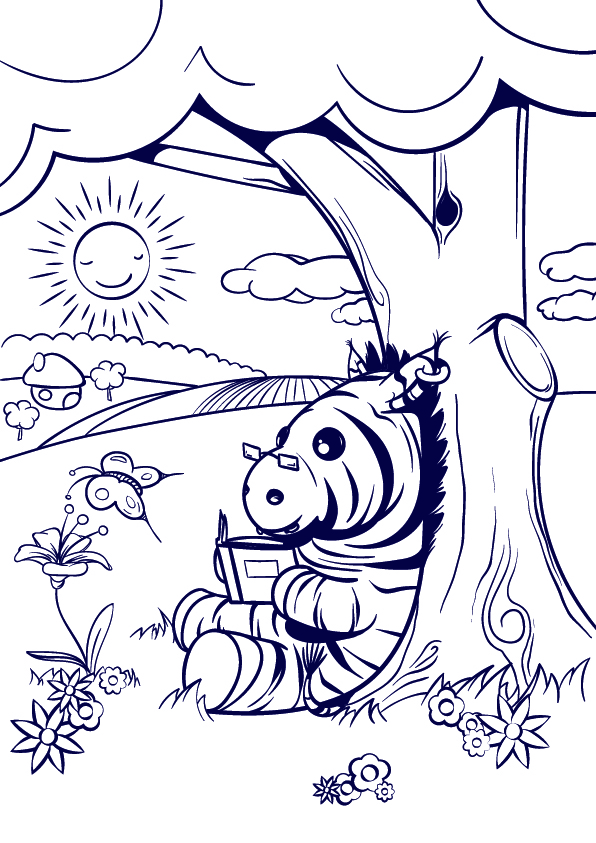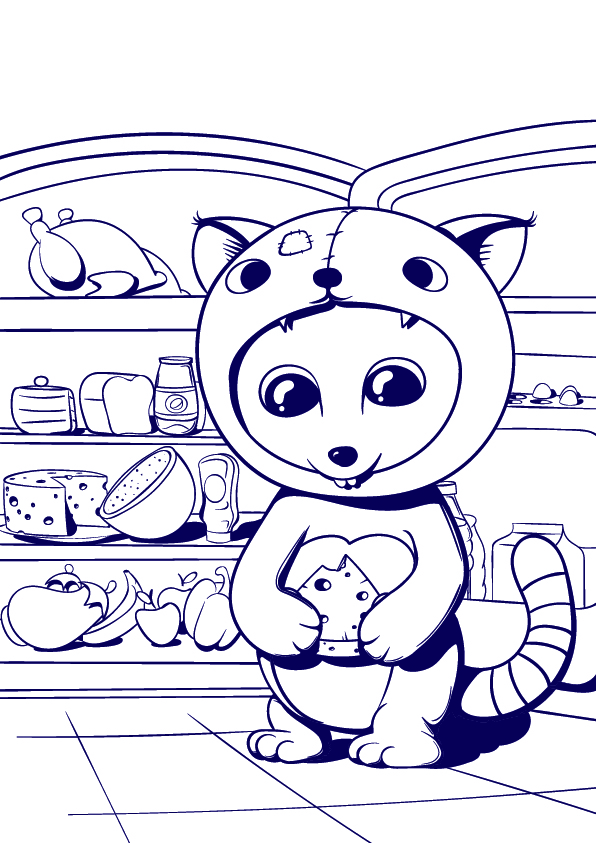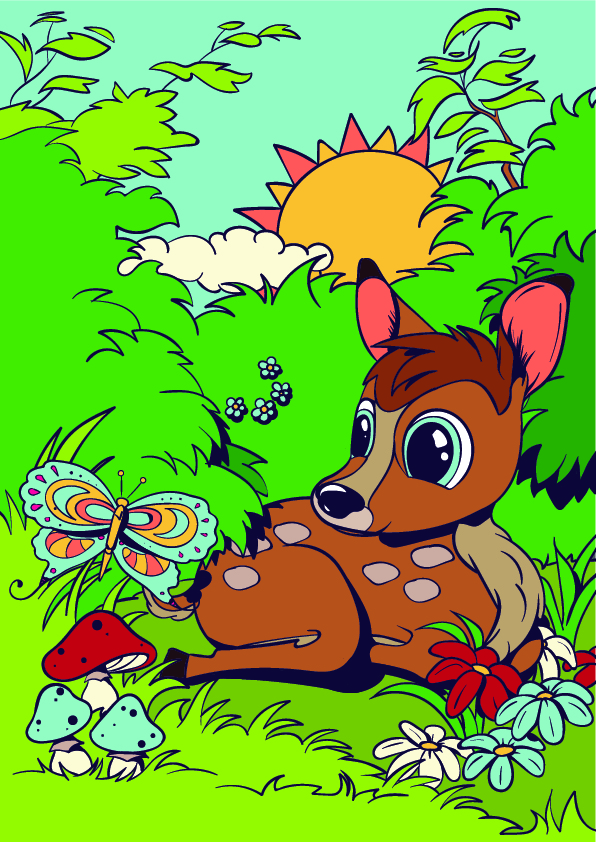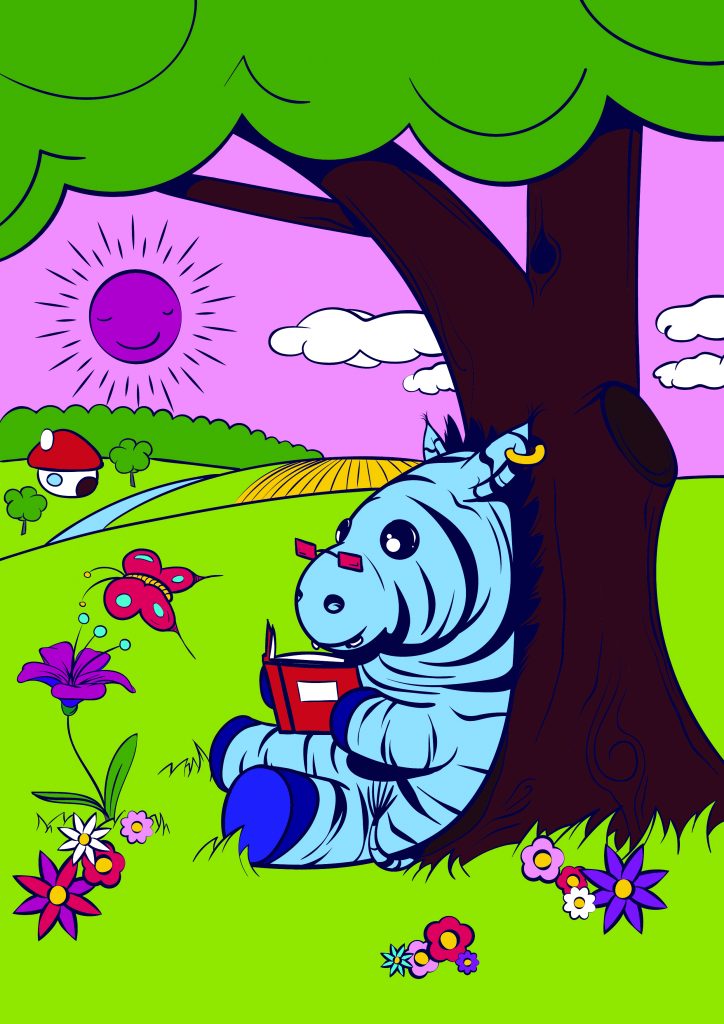In childhood we do extraordinarily creative things, involuntarily, everyday, living the life that any adult would dream off. In childhood we grow, we experiment and discover the world, piece by piece, minute by minutes, constructing a map of our own world to be, shaping our universe of joy and happiness.
A handful of activities help us discover inch by inch the world in its beauty and today we are going to address something really memorable that truly nourishes, nurtures and completes one`s experience: drawing.
Drawing, unlike any other activity, creates a state of pure concentration for the child, a state that summons imagination into play. It emphasizes the growth of the children through different means yet the huge gap in development can be seen in social skills, self-trust, emotional, physical and cognitive development between children that drew in childhood and those who haven`t. Simple sketches, things to draw every now and then can change everything.
The action can translated into simple doodling, coloring or drawing in its true meaning and in the following rows we will exemplify how certain skill sets are developed through this beautiful artistic expression.
A child aged two or three starts to recognize shapes in their primitive forms such as squares, triangles, circles and along with this ability associations are surfacing. The young mind learns to connect the circle with the head, to identify the square or rectangle in a home; these basic shapes in their associative form are what Kelog previously named “aggregates”; the birth of drawing through primitive forms.
The child attempts to summon reality in his drawing through aggregates, he uses utterly simple representations to create sceneries, the most common and adored one being the fridge-worthy family heirloom, the illustration of the entire family constituted out of lines and circles in a line. Something adorable, memorable, born through the simple art of drawing.
Scribbling Initiative
18 months. The age at which the kid starts scribbling around using messy lines, circles and colors, creating the connection between his mind and the real realm, figuring out what he can actually accomplish. Color at this young age is key, the visual stimuli materialized on paper must be present. This early initiative is crucial for the children`s development as it creates and fine tunes the muscle, hand, wrist and whole arm coordination through repetitive actions.
By moving his coloring pencil around the piece of paper the connection between hand and wrist is being pushed towards perfection in the child`s attempt to draw what his mind actually envisions.
Scribbling naturally has a great side effect as it promotes social interaction, cohesion, scribbling beautifully connecting children early on.
 Conceptualization and Simplification
Conceptualization and Simplification
At three-four things change in the mind of the child as he already learned to create connections between a landscape, a setting and the piece of paper. He starts to draw things from images already stored in his mind, creating far more advanced simplification in the attempt to get creative and invent sceneries. He starts to draw his home, the mountainside that you’ve visited together or the playground, he adds elements that add entourage and depth to a context such as a smiling sun, a pack of birds or a snowman by the Christmas tree.
This process is possible thanks to over-simplification, a skill that allows him to grasp elements from reality to creatively use in his painting, drawing.
Simplification is basically the ability that facilitates sketching and thus world-class industries today. Simplification can help an individual be organized, clutter-free in mind and reality alike.
A child can gain numerous other skills while drawing and coloring, he can create bonds and connections with loved ones, play colleagues and relatives and he ought to speak with great joy of what he realised, what draws on one piece of paper. The parent ought to help.
In the following rows a few tips and tricks have been nestled for the parent, a few ideas that might emphasize this educative tool and encourage the action itself.
 A parent should never critique but be supportive, encouraging as anything can distress the creative initiative of the little one, anything can shake his balance. A young mind needs nothing but growth and nothing but happiness and joy in positive environment to do so. Be communicative, discuss concepts, discuss drawings, every moment is crucial.
A parent should never critique but be supportive, encouraging as anything can distress the creative initiative of the little one, anything can shake his balance. A young mind needs nothing but growth and nothing but happiness and joy in positive environment to do so. Be communicative, discuss concepts, discuss drawings, every moment is crucial.
Positive answer to any artistic endeavor must be present. Everything that is creative, everything that inspires creation, discovery, curiosity ought to encourage the child even if that means picking up a leaf from a pile of mud or coloring on the living room walls. It is your responsibility to use every opportunity to challenge the child creatively and encourage them at the same time. To keep drawing of the walls create a dedicated drawing area in the vertical plane or have wallpaper placed in certain areas for this action specifically.
Embrace the unpredictable, be prepared. The joyful creative drive of the child arises at the most unexpected times in the most odd scenarios. Pay attention, do not deny the child opportunities, be ready to help him achieve his creative needs. He might need to draw during dinner, during a football match that you’ve expected or simply in an odd moment; be there, be ready with paper and coloring pencils, be supportive and encourage growth.
Drawing is something pure something to be appreciated at every scale in life. How do you express creatively these days? We would love to hear your opinion !
Photo Courtesy to Homesthetics.net













